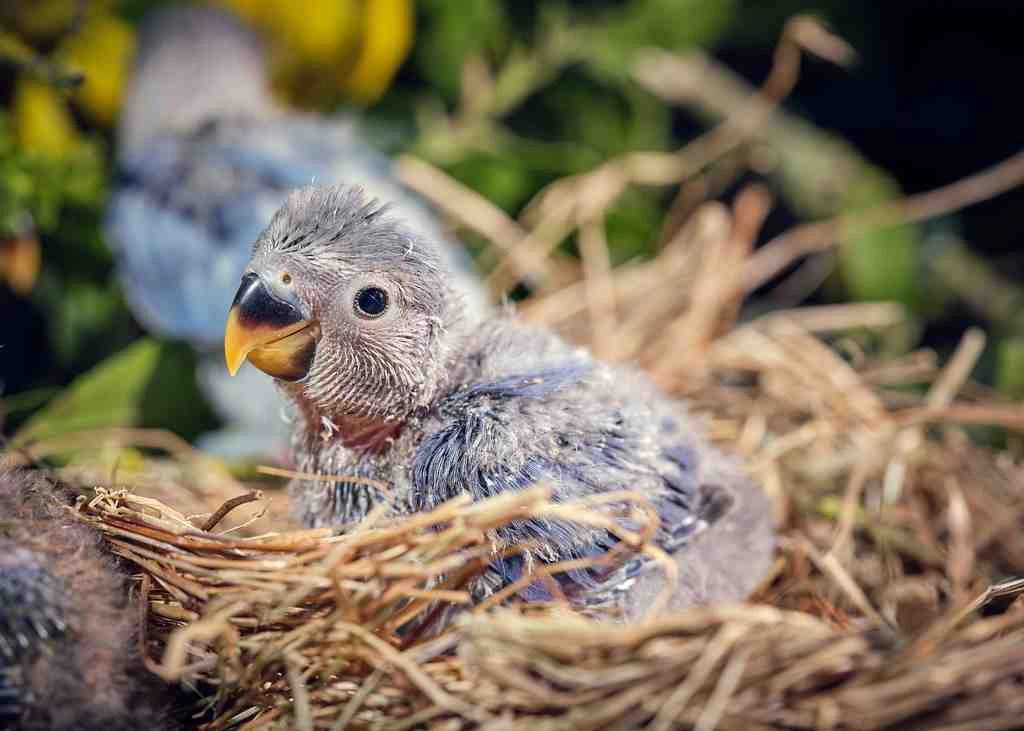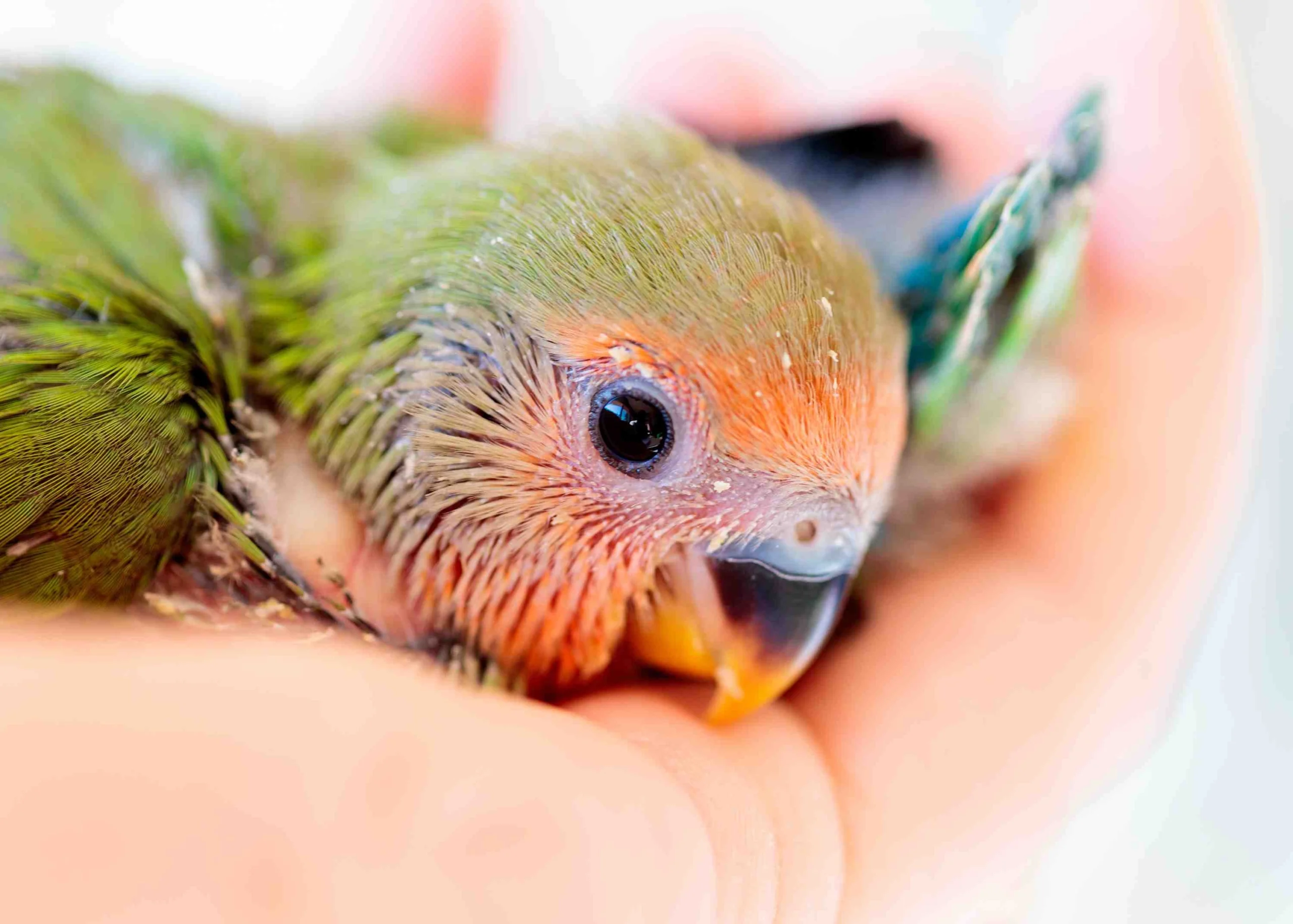Health & Care, Blogs
Weaning a Baby Parrot: A Step-by-Step Guide for Bird Owners
Ever wondered how to switch your baby parrot from formula to solid food? Weaning a baby parrot is key to their growth and health. It affects their physical and mental well-being. This guide will show you how to wean your parrot the right way, with tips and signs to watch for.
Whether you’re new to pets or have lots of experience with birds, this guide will help you. You’ll learn how to make the best choices for your baby parrot during this important time.
Key Takeaways
- Weaning is essential for a baby parrot’s growth and development.
- Physical and behavioral signs indicate when it’s time to wean.
- A comfortable environment makes weaning easier.
- Slow steps are best when moving to solid food.
- Watching how they eat helps you see if they’re weaning well.
Understanding the Weaning Process for Baby Parrots
Learning about the weaning process for baby parrots is key for their health and happiness. It’s when they move from formula to solid food. This change affects their nutrition and growth.
What is Weaning and Why is it Important?
Weaning means baby parrots start eating solid foods instead of just formula. It’s vital for their growth and health. They learn to eat different foods and develop good eating habits. This affects their health for a long time.
The Developmental Stages of Baby Parrots
Baby parrots go through different stages as they get ready for weaning. Knowing these stages helps you feed them right. The main stages are:
| Age | Developmental Stage | Key Characteristics |
|---|---|---|
| 0-2 weeks | Hatching | Completely dependent on formula; requires constant care. |
| 3-4 weeks | Growing | Begins to open eyes; starts to gain feathers. |
| 5-8 weeks | Transitioning | Starting to explore food; can nibble on soft solids. |
| 9-12 weeks | Approaching Weaning | Shows interest in various foods; formula intake decreases. |
Knowing these stages helps you pick the best time to start solid foods. This makes the change easier for your parrot.
Signs Your Baby Parrot is Ready to Wean
Knowing when your baby parrot is ready to wean is key for bird owners. It’s important to spot both physical and behavioral signs. This helps make the switch to solid food smooth for your bird7.
Physical Indicators
Look for these physical signs to know your parrot is ready to wean:
- Increased balance: Your parrot will move and perch more steadily as it grows.
- Growth of feathers: New feathers on the wings and tail mean it’s time for solid foods.
- Strong appetite for solid food: If your parrot starts liking seeds and fruits, it’s a good sign.
Behavioral Changes
Behavioral changes are also important signs of readiness:
- Seeking food independently: Trying to feed itself shows your parrot wants to move on.
- Curiosity about surroundings: Exploring more means it’s ready for new foods and textures.
- Reduced dependency on hand feeding: Not wanting formula as much shows it’s growing up.
Keep an eye on these signs to time weaning right. This ensures it matches your parrot’s growth and development.
Best Practices for Weaning a Baby Parrot
Starting to wean a baby parrot can be a big step. Using the best practices helps a lot in their move to solid food. These tips make sure your bird feels safe and confident as they grow.
Creating a Comfortable Environment
It’s key to make a comfortable weaning environment for your baby parrot. A calm place helps with healthy eating and exploring. Think about these things:
- Provide a quiet, safe space away from loud noises and disturbances.
- Incorporate familiar objects, such as toys or perches, to reduce anxiety.
- Ensure the temperature is appropriate for your parrot’s species.
This cozy setup helps your baby parrot feel safe as they start to wean.
Using Gradual Techniques
Gradual weaning techniques are key for a smooth move to solid food. Don’t just stop formula feeding suddenly. Try these steps:
- Slowly reduce the number of formula feedings each day.
- Introduce soft solid foods progressively, allowing your baby parrot to acclimate.
- Observe your parrot’s reaction, adjusting the process according to their comfort level.
This gentle approach reduces stress and lets your baby parrot get used to new foods.
| Technique | Description | Benefits |
|---|---|---|
| Reduce Formula Feedings | Gradually cut back on how often you feed formula. | Encourages hunger for solid foods. |
| Introduce Soft Foods | Start with mashed or pureed fruits and vegetables. | Makes the transition smoother with familiar textures. |
| Monitor Behavior | Keep an eye on your parrot’s reactions to new foods. | Helps tailor feeding techniques to individual needs. |
Tips for Weaning a Baby Parrot from Hand Feeding
Weaning your baby parrot from hand feeding needs careful thought and attention. Using effective tips helps support them during this important change. It’s key to time the weaning right for a smooth transition.
Choosing the Right Time to Start
Choosing the best time to wean your parrot is crucial for their comfort and readiness. Look for signs like feather growth and the ability to perch on their own. Also, watch for signs of curiosity and interest in solid food. A well-planned approach can make weaning easier.
Monitoring Feeding Patterns
It’s vital to keep an eye on how much solid food your parrot eats and their appetite changes. Adjust your feeding plan as needed. A steady schedule and a balanced diet support their health. Being proactive with this will greatly improve your weaning success.
Weaning Baby Parrot Off Formula
Weaning your baby parrot off formula needs patience and a good plan. Start by reducing formula feedings bit by bit. This helps your parrot get used to eating solid foods without getting upset. Keep an eye on how much formula your bird eats and cut down slowly as you add more solid foods.
Make a plan that slowly cuts down on formula while eating solid foods more often. This way, your parrot will get used to eating solid foods without any problems.
Using good formula transitioning techniques makes weaning easier. Start giving your parrot small amounts of different solid foods with the formula. This keeps mealtime exciting and makes sure your parrot gets a balanced diet. Include fruits, vegetables, and grains to keep things interesting.
Watch how your parrot likes different foods and adjust their diet based on what they prefer. This will help you make sure they get the nutrients they need.
As you give less formula, watch for signs that your parrot is ready to stop formula feeding. This is important for their health and how well they adapt. Keep an eye on their weight and how they act to see if they’re doing okay.
Weaning Baby Parrot Onto Solid Food
Introducing solid foods is a big step in your baby parrot’s growth. Moving from a liquid diet to solid food boosts their health and digestion. Start with soft foods to help them get used to chewing and eating different textures. The right approach makes this transition easier for you and your parrot.
Introduction to Solid Foods
When starting solid foods, choose soft and easy-to-digest items. These first foods should be good for their beak and stomach. You can begin with mashed fruits or vegetables to help them adjust. Watch how your parrot reacts to see when it’s time for more complex foods.
Recommended Food Options
It’s important to give your baby parrot a varied diet. Here are some recommended foods for baby parrots as they start eating solid foods:
- Mashed bananas
- Cooked sweet potatoes
- Leafy greens like kale and spinach
- Cooked grains such as quinoa or brown rice
- Specially formulated pellets for baby parrots
These foods offer different tastes and textures, and they give your parrot important nutrients. Properly weaning your baby parrot lays the groundwork for a healthy, varied diet later on.
Conclusion
Weaning your baby parrot is a big step in its growth. It needs careful thought and attention. This guide has shown you how to spot when your parrot is ready, how to support it at home, and how to switch from formula to solid food. Remember, being patient and watching closely is crucial.
Following the tips for weaning your baby parrot helps make the change smooth. Watching for changes in your parrot’s behavior and body will help you adjust. A slow approach makes the experience better and strengthens your bond with your pet.
As you think about weaning, remember that with good planning and knowing when your parrot is ready, each day brings it closer to being independent. Celebrate these steps and enjoy the special bond you build with your baby parrot during this important time.



